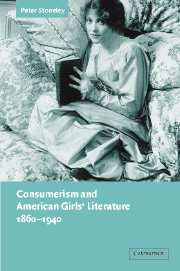7 - The clean and the dirty
Published online by Cambridge University Press: 22 September 2009
Summary
In some of the key bestsellers of the turn of the century, including Rebecca of Sunnybrook Farm and Daddy-Long-Legs, the girl represented a modified version of Romantic nature. With the spontaneity of youth, she seemed a model of Wordsworthian authenticity amidst the artificiality of the modern age. But the nature that she could represent was limited. Certainly it excluded such things as sexuality or predatory violence. In her nature took naive and harmless forms, so she could serve as a preferred image for a society that was ever more deeply immured in the guilt and dirt of industrial urbanization. But far from being an antidote to the modern, in reality the girl was one of its defining symbols. She stood for a consumerized pastoralism. Through her, natural values could be transformed into a spectacle to beguile the successful city-dweller. There was, though, a reaction against the consumerist idealization of girlhood. With the success of Rebecca of Sunnybrook Farm, Wiggin became embroiled in what Howells referred to as the “realism wars.” She intervened in the debate as to whether the privileging of the girl and her cleanly nature had led to an anemic culture. Similarly, Webster's girl-oriented work was occasionally excoriated for infantilizing popular taste. The girl was caught up in the argument as to what fiction should attempt to do. Even from its early days, girls' fiction was set up as a sort of cure to what were perceived as overly critical and sensational realist tendencies.
- Type
- Chapter
- Information
- Consumerism and American Girls' Literature, 1860–1940 , pp. 107 - 121Publisher: Cambridge University PressPrint publication year: 2003

